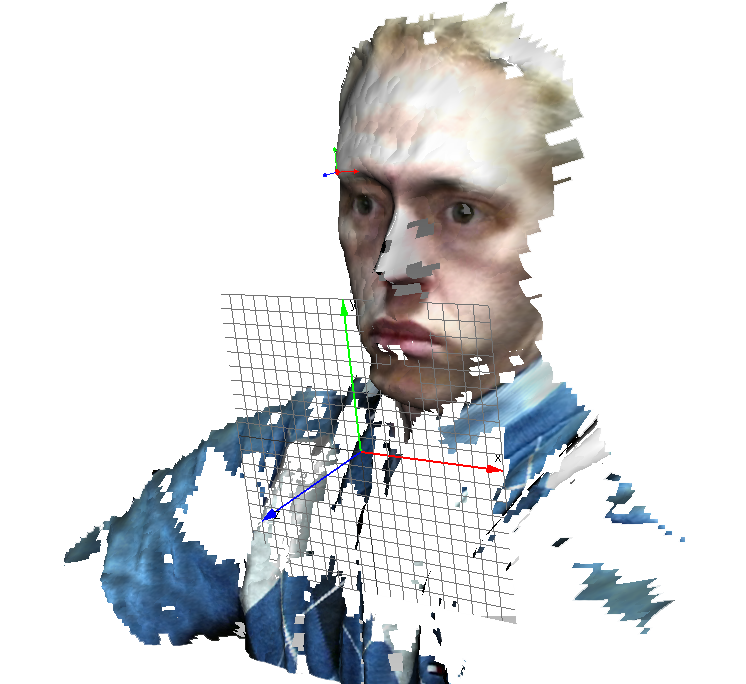|
“The Modular Smart Classroom: Anchoring Communities with Interactive Learning Spaces”. Funded by the Institute for Museum and Library Services, National Leadership Grants for Museums ($61,889, 2018). Co-PI |
|
Carlson G., Caporusso N. (2019). “A Physically Immersive Platform for Training Emergency Responders and Law Enforcement Officers”. In Nazir S., Teperi AM., Polak-Sopińska A. (Eds) Advances in Human Factors in Training, Education, and Learning Sciences. AHFE 2018. Advances in Intelligent Systems and Computing. v. 785, 108-116. Springer, Cham. |
|
Carlson, G., Sosnoski, J. (2017). “Conceptual Logistics as a Form of Critical Pedagogy”. International Journal of Critical Pedagogy. 8(1), 7-32. |
|
LiveStock 3D
Faculty in the Department of Agriculture need a way to help students visualize the processes involved in livestock production. This project employs virtual reality tools to articulate and visualize the reproductive and other bodily functions of cows. The software allows the user to select, highlight, and learn about each relevant part of bovine anatomy. The 3D model can be rotated, zoomed, or opened layer by layer. |
|
Tiger Range
A flagship project for the institute is Tiger Range which not only produces interactive models of the FHSU campus, but also investigates the processes through which these models can be efficiently and cost-effectively built. The 3D model of campus will be useful for wayfinding systems, facilities, planning, recruitment and retention, and marketing the university. |
|
X-Ray Brain
Faculty in the Department of Psychology are looking for a way to help students understand the true complexity of the human brain. It is nearly impossible to demonstrate each of the various parts and connections inside the brain with a 2D illustration or even a video. This project leverages 3D virtual reality tools and data from an actual MRI scan of a human brain to create a truly interactive platform for learning about each part of the brain. |
|
Virtual Library
Using virtual reality and video game equipment, the Institute for New Media Studies has developed a fully immersive and highly accurate 3D model of Forsyth Library. The model is used to drive an exploration tool, scavenger hunt, and emergency evacuation drill. The system is even capable of providing Google Earth style walking directions in 3D virtual spaces directly to a book on the shelf. |
|
Virtual Victor
It is important to develop a brand by making it more engaging for audience members and stakeholders. At FHSU, our mascot is Victor E. Tiger. We wanted to make sure he could engage with students, faculty, and community members. The problem was how to bring him to life. Using 3D motion and audio capture, we have a developed a tool for creating customized videos that can put Victor anywhere. In the next phase of the project, new software and a synthetic voice will allow Victor to communicate programmatically without the time of recording a real person. The platform can then generate personalized videos, on demand, for any number of occasions. We are working to integrate this idea into student recruitment and retention, outreach for athletics, and more engaging communication with our community members. |
|
A-Star
The proliferation of cheap equipment and easily programmable systems makes the creation of simple robots a staple of STEM Learning. Tiger Cub is the name of the institute’s LEGO robot being combined with the Virtual Library project. A-Star is being built to serve as a library concierge that can escort a library patron directly to a specific room, service, or book on the shelf. |
|
Carlson, G., Sosnoski, J. (2013). Infectious Textbooks: How forcing thinking into print infects lively minds. Zombies in the Academy: Living death in higher education A. Whelan, C. Moore, R. Walker (Eds.). 157-172. United Kingdom: Intellect Press. |
|
Sosnoski, J., Carlson, G. (2013). “Coding Collected Research Papers to Create a Simple Information System”. International Journal of Sociotechnology and Knowledge Development. 5(4), 38-58. October-December 2013 (Winter 2013). |
|
Gonzalez, A. J., Leigh, J., DeMara, R. F., Johnson, A., Jones, S., Lee, S., Hung, V., Renambot, L., Leon-Barth, C., Brown, M., Elvir, M., Hollister, J., Kobosko, S., Carlson, G. (2013). Passing an Enhanced Turing Test – Interacting with Lifelike Computer Representations of Specific Individuals. Journal of Intelligent Systems. Volume 22(4), 365-415. |
|
Lee, S., Carlson, G., Jones, S., Johnson, A., Leigh, J., Renambot, L. (2010). Designing an Expressive Avatar of a Real Person. Proceedings of the 10th International Conference, 64-76. IVA 2010, Philadelphia, PA: 20 Sep 2010. |

